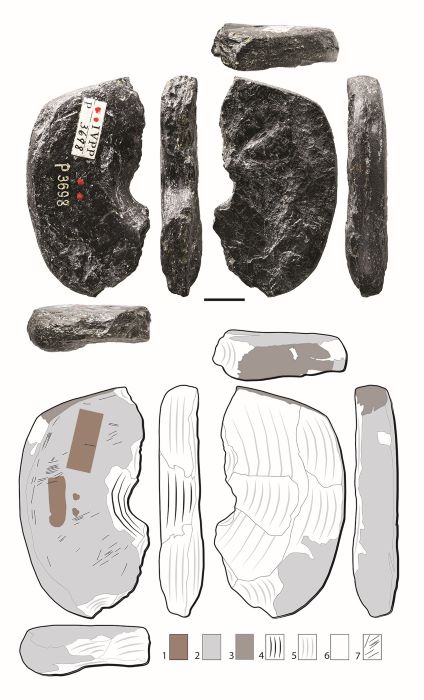The arrival of Homo sapiens in China occurred at least 5,000 years earlier than thought
Located about 20 kilometres from the city of Shuozhou, the Shiyu site is, to date, the oldest archaeological site with evidence of the arrival of modern humans in China. Artefacts discovered, including a perforated disc made of graphite — currently the oldest jewellery item ever found in China — and a bifacially shaped bone tool, present a series of characteristics indicative of a diverse range of cultural influences at the time our species arrived in the region. Analysis of tools made of obsidian, a volcanic rock, also revealed the existence of social networks spread over distances of up to 1,000 kilometres. Scientists believe that interactions between Homo sapiens and indigenous populations, far more complex than archaeologists previously imagined, led to significant genetic and cultural mixing.
These results, published on 18 January in Nature Ecology & Evolution, shed new light on the global expansion of Homo sapiens and broaden our understanding of human history.

Notes
[1] Working at the “From prehistory to today: culture, environment and anthropology” laboratory (CNRS/French Ministry of Culture/Université de Bordeaux).

Bibliographic information:
Initial Upper Palaeolithic material culture by 45,000 years ago at Shiyu in northern China. Shi-Xia Yang, Jia-Fu Zhang, Jian-Ping Yue, Rachel Wood, Yu-Jie Guo, Han Wang, Wu-Gan Luo, Yue Zhang, Emeline Raguin, Ke-Liang Zhao, Yu-Xiu Zhang, Fa-Xiang Huan, Ya-Mei Hou, Wei-Wen Huang, Yi-Ren Wang, Jin-Ming Shi, Bao-Yin Yuan, Andreu Ollé, Alain Queffelec, Li-Ping Zhou, Cheng-Long Deng, Francesco d’Errico and Michael Petraglia (2023). Nature Ecology and Evolution, 18 janvier 2024.


